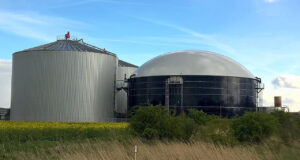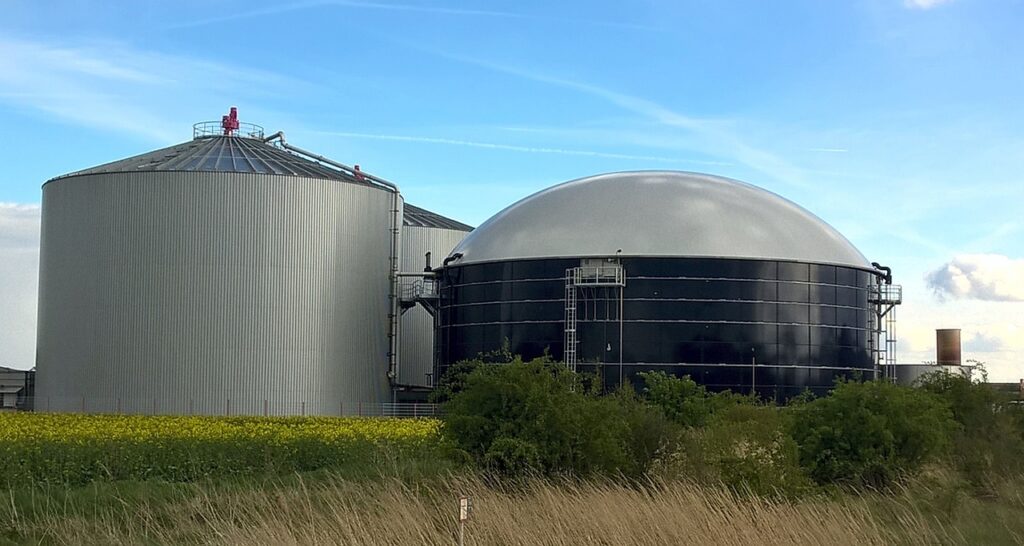Physical Address
23,24,25 & 26, 2nd Floor, Software Technology Park India, Opp: Garware Stadium,MIDC, Chikalthana, Aurangabad, Maharashtra – 431001 India
Physical Address
23,24,25 & 26, 2nd Floor, Software Technology Park India, Opp: Garware Stadium,MIDC, Chikalthana, Aurangabad, Maharashtra – 431001 India

Aayushi Sharma
The global energy mix is beginning to include a significant amount of renewable energy technology. India has been actively promoting renewable energy and has extensive renewable energy expansion programs. By 2022, the Ministry of New and Renewable Energy aimed to build 100,000 small-scale biogas facilities and 10 GW of bioenergy. For the past three decades, India has promoted biogas technology through a number of governmental initiatives. The initiatives were unsuccessful even though India offers favorable climatic and sociological circumstances, including an ideal climate, a large population of cattle, and a robust agricultural sector. Therefore, it is necessary to investigate the causes of biogas’ failure in India as well as the precise measures needed to bring the country’s biogas market back to life.
Biogas usage in India
India is the third-largest global GHG emitter. In 2010, the garbage and agricultural sectors were responsible for 21% of India’s GHG emissions. India’s large domestic bioenergy potential can be used to help satisfy the country’s rising energy needs, which are currently mostly being satisfied by imported fossil fuels.
Biogas has long been recognized in India as a substitute for rural homes that greatly increases the efficiency of cookstoves, however the proportion of biogas in rural households’ fuel mix is quite low. In rural regions, there is a significant reliance on the conventional usage of biomass (twigs, cow dung, wood chips, and firewood) for cooking and heating. Being a renewable energy source, biogas is locally accessible, and can be generated using organic feedstocks under anaerobic conditions.

Farmers frequently use open field burning techniques to dispose of agricultural wastes in rural locations since storage and transportation are difficult to reach or expensive. Around 1165 million m3 of biogas per year were thought to be lost annually owing to crop burning in India’s Indo-Gangetic plains. Burning agricultural waste products after harvesting the land prepares it for planting crops the following season, which degrades air quality and increases health hazards. Agricultural waste can be turned into biogas through anaerobic digestion to prevent local air pollution. Despite these advantages of methane, the potential for biogas is only partially realized since crop and animal leftovers are not used effectively, among other economic and infrastructure issues.
Potential of Biogas in India
As per a recent study by the Ministry of New and Renewable Energy, India currently has an estimated 750 million metric tonnes of biomass available each year. According to the study, agricultural leftovers have an estimated surplus biomass availability of roughly 230 million metric tons per year, or a potential of about 28 GW. Aside from this, the 550 sugar mills in the nation could create an additional 14 GW of power through bagasse-based cogeneration provided they implemented the most efficient levels of cogeneration from a technical and financial standpoint.
Similar to natural gas, biogas can be used for heating, producing electricity, and, after being upgraded, as a car fuel. In addition to sharing characteristics with natural gas, biogas is less harmful to the environment. It is possible to inject upgraded biogas (biomethane) into natural gas pipes. Due to its high phosphorus content and potential to reduce the usage of chemical fertilizers and pesticides, biogas sludge can also be utilized to create biofertilizer for farms.
Barriers to biogas production in India
The selection of an energy source is heavily influenced by economic factors. Investment expenses for biogas plants are significant. This covers expenses such as building a biogas plant, buying equipment, employing technical people, implementing technology etc. Even though the feedstock is free in the case of the biogas digester, the costs of treatment and transportation of the feedstock, particularly over long distances, have a detrimental impact on the economics of the biogas power plant. Equally significant is the situation involving biomethane, where installing a purification unit and a gas-conditioning unit necessitates greater investment costs, acting as a barrier to biomethane’s expansion of gas grid injection.
Important market hurdles include lower fossil fuel prices and a high price for biogas. Because biogas is more expensive than natural gas, end users are concerned that they may have to pay more than is “usual.” In order for biogas to be used in the public sector, its cost must be competitive with that of other available fuels. Numerous studies offer a thorough comparison of biogas and natural gas. In the first scenario, natural gas is viewed as a key facilitator and backup solution, although writers also stress the importance of maintaining a high biogas share.
On the other side, biogas may result in a rise in natural gas imports. For instance, vehicle gas is a mixture of natural gas and improved biogas. Due to its high cost, a supply of 100% improved biogas is unattractive, but a mixing of biogas and natural gas makes this fuel more appealing to customers.
The distribution and use of biogas is hampered by a shortage of underground pipelines and connections to the national grid, as well as other technical issues such proper waste segregation, garbage collection, and waste allocation and storage. Infrastructure problems, including the scarcity of feedstock, can also be a problem. Rural families could not have as many cattle or chickens as are necessary to produce enough animal feces to produce enough biogas to suit a household’s demands.

The image shows a biogas plant
Studies highlight the significance of involving all stakeholders, particularly the private sector (to market biogas energy and ensure its commercial viability), governments (to establish support initiatives and a clear policy framework), financial institutions (to offer bank loans with preferential terms), R&D institutions (to improve technology innovation and enhance biogas processes), lobbying organizations, the media, and others. Environmental protection is a pressing issue that needs to be addressed by everyone in society.
References:
https://www.sciencedirect.com/science/article/pii/S2211467X19301075
https://linkinghub.elsevier.com/retrieve/pii/S0960148115300288
https://linkinghub.elsevier.com/retrieve/pii/S0301421510002922
https://www.sciencedirect.com/science/article/abs/pii/S0960148119304549
https://mnre.gov.in/bio-energy/current-status
https://mnre.gov.in/bio-energy/schemes
Image source: https://www.fortunebusinessinsights.com/india-biogas-market-106563